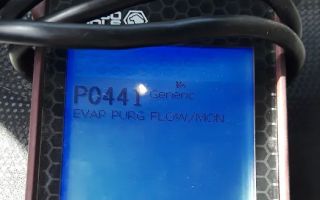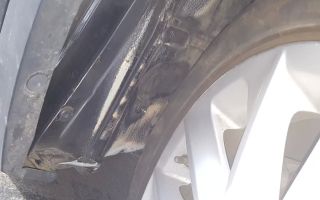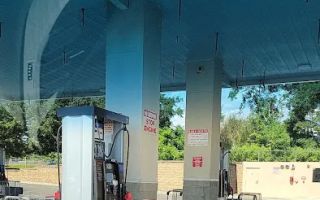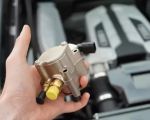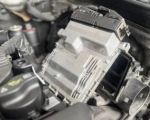- #Why-preparing-your-car-for-long-term-parking-matters
- #Essential-steps-to-get-your-car-ready-for-long-term-parking
- #Real-stories-that-show-the-risks-of-skipping-preparation
- #How-to-protect-your-car-from-weather-battery-drain-and-tire-damage
- #Choosing-the-right-location-for-long-term-parking
- #Expert-advice-for-maintaining-a-parked-car-over-weeks-or-months
1. Why Preparing Your Car for Long-Term Parking Matters
Many drivers don’t realize how quickly a vehicle can deteriorate when left unused for long periods. Understanding how to prepare your car for a long-term parking situation is crucial because your battery can die, tires can develop flat spots, fluids might degrade, and exterior surfaces can take a beating from weather exposure. Proper preparation isn’t just about safety—it protects your investment and ensures your car will start smoothly the moment you return.
Some people store their vehicle because of extended travel, work relocation, or seasonal changes. Regardless of the reason, a well-prepared car ages far better than one left alone without attention. If you want help choosing protective equipment or getting roadside assistance when retrieving a long-parked vehicle, the team at 【Rescue & Towing 】can offer useful recommendations.

Pick Your Part - Help Yourself
1232 Blinn Ave, Wilmington, CA 90744, USA
2. Essential Steps to Get Your Car Ready for Long-Term Parking
2.1 Clean the Interior and Exterior
Cleaning prevents mold, odors, and long-term staining. Dust, crumbs, moisture, and old food can attract pests. Washing the exterior removes corrosive substances like salt or tree sap that can damage your paint over time.

Pick Your Part - Greer
13054 E Wade Hampton Blvd, Greer, SC 29651, USA
2.2 Inflate Tires to the Right Pressure
Tires naturally lose air while sitting still. Over weeks or months, underinflated tires develop flat spots that create vibration when driving again. Inflate them to the upper recommended PSI before parking the car long-term.
2.3 Top Off Fluids and Change the Oil
Old oil becomes acidic over time, which can slowly damage your engine. Adding clean oil helps protect internal components. Make sure coolant, washer fluid, and brake fluid are also at safe levels to prevent deterioration.
2.4 Keep the Gas Tank Full
Filling the tank prevents moisture buildup and reduces the chance of fuel line corrosion. For parking longer than a few months, consider adding a fuel stabilizer.
2.5 Disconnect or Maintain the Battery
Car batteries drain faster than most people expect. Disconnect the negative terminal or use a trickle charger if the parking location allows it. This single step often saves drivers from dead batteries when they return.
2.6 Cover the Car to Protect It From Weather
A breathable, high-quality car cover shields against dust, UV rays, rain, tree sap, and bird droppings. Covers also deter thieves by hiding what’s inside the vehicle.
3. Real Stories That Show the Risks of Skipping Preparation
3.1 The Battery That Didn’t Survive a Six-Week Trip
A traveler shared how they left their car parked at an airport for six weeks without disconnecting the battery. When they returned, the battery was completely drained and unresponsive. They needed roadside assistance to replace it on the spot—something that could have been avoided with simple preparation.
3.2 Tires Ruined by Flat Spots
A driver who stored their car for three months without adjusting tire pressure experienced severe vibration upon returning. A mechanic confirmed irreversible flat spot damage. This story is a reminder that even tires “just sitting there” can deteriorate.
3.3 Mold in the Interior After Leaving Moist Items Behind
One family accidentally left damp gym towels in the trunk before storing their vehicle for a month. When they returned, mold had spread throughout the trunk lining. A deep professional cleaning was needed. This situation shows why cleaning before parking is crucial.
4. How to Protect Your Car From Weather, Battery Drain, and Tire Damage
4.1 Shielding From Weather Exposure
Parking outdoors introduces risks like UV fading, acidic bird droppings, hail damage, and accumulated debris. A good-quality car cover and, if possible, a shaded or sheltered area can dramatically reduce wear.
4.2 Preventing Battery Drain
Batteries naturally lose charge. Cold weather speeds up the process. Disconnecting the battery, using a maintainer, or starting the car every few weeks helps keep it functional.
4.3 Avoiding Tire Issues
Parking on concrete for long periods can be harsh on tires. Some drivers place boards beneath each tire to reduce pressure points. Others inflate the tires slightly above normal (within the safe PSI range) so they hold their shape.
5. Choosing the Right Location for Long-Term Parking
5.1 Indoor vs. Outdoor Parking
An indoor garage offers the best protection from the weather. However, many people rely on airport lots, driveway parking, or rented spaces. If parking outdoors, consider locations away from trees, industrial debris, or areas prone to flooding.
5.2 Safety Considerations
Well-lit areas reduce theft risk. Parking spots with security cameras or monitored entryways provide additional peace of mind. Ask neighbors or friends to occasionally check on your vehicle if it’s stored near home.
5.3 Accessibility When You Return
Think ahead: Will you need towing assistance? Could your car get blocked in? Is the area known for heavy snowfall that could trap the vehicle? Practical planning saves time and stress later. Companies connected with 【Rescue & Towing 】often help drivers retrieve vehicles after long-term storage.
6. Expert Advice for Maintaining a Parked Car Over Weeks or Months
6.1 Starting the Car at Regular Intervals
If possible, ask someone to start the car every two to four weeks. This circulates fluids, charges the battery, and prevents mechanical stiffness.
6.2 Moving the Car Slightly to Protect Tires
A slight repositioning helps avoid flat spots and keeps the brakes from sticking. Even rolling the vehicle a few feet can make a difference.
6.3 Inspecting for Pests
Long-term parking can attract rodents seeking warmth. Check for chew marks, nests, or droppings if the car sits in rural or wooded areas. Preventative measures like cleaning and keeping food out of the car help minimize risks.

